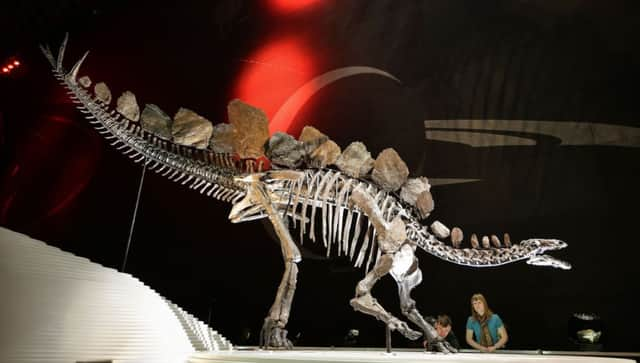Dinosaur is museum’s prehistoric new arrival


Now, Sophie the Stegosaurus has a new home, London’s Natural History Museum, where her presence dominates the Earth Hall.
With 85 per cent of her skeleton intact, she is the world’s most complete specimen of the instantly recognisable dinosaur famous for the huge plates cresting its back and the spear-like horns on the end of its tail.
Advertisement
Hide AdAdvertisement
Hide AdAlthough museum scientists do not actually know the sex of their Stegosaurus, “she” has been informally named Sophie after the daughter of the wealthy donor. At 18 feet long and 9.5 feet tall, Sophie is relatively small compared with the largest of her species which measured up to 29 feet.
Sophie is the first complete dinosaur specimen to go on display at the Natural History Museum in nearly 100 years.
She joins “Dippy” the Diplodocus, whose massive 85 foot skeleton - a replica rather than the real thing - has stood in the museum’s central Hintze Hall since 1905.